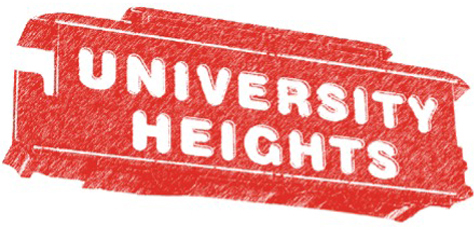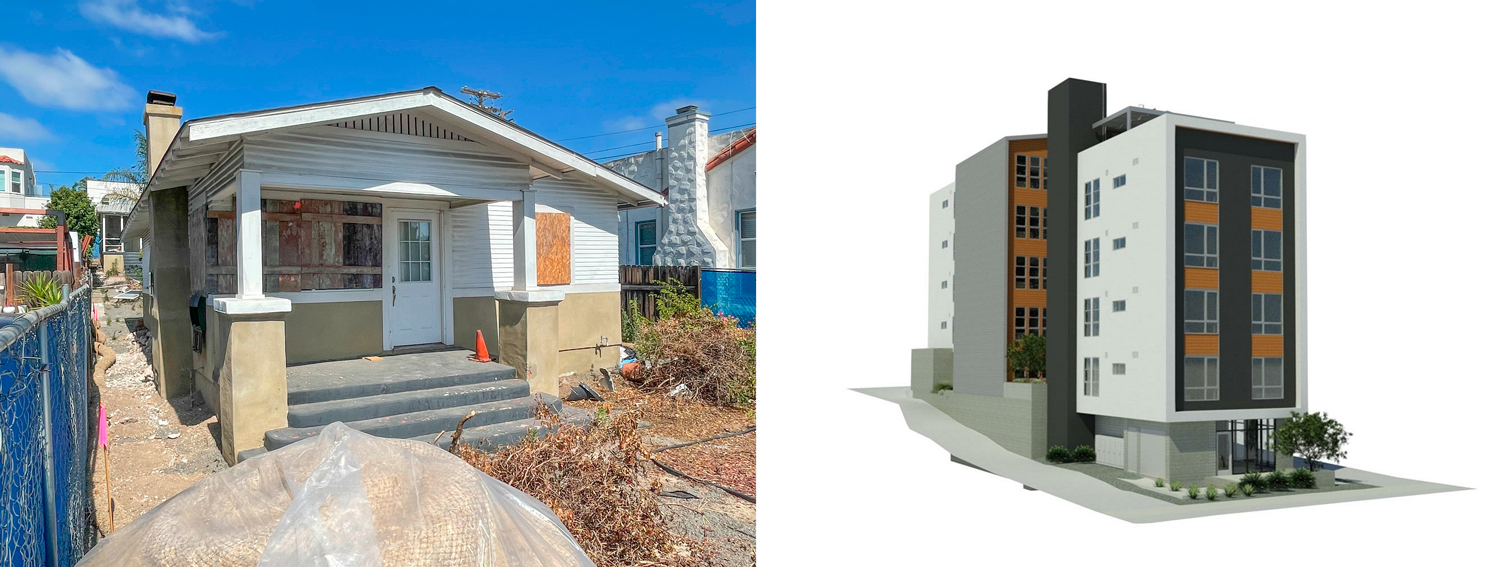Like many older neighborhoods throughout San Diego, University Heights is faced with an onslaught of inappropriate development—a culmination of important changes at the City that weakened the influence of the Planning Department and Community Planning Groups, and invalidated approved Community Plans and zoning ordinances.
Community Plans Approved to Allow Increased Height and Density in UH
In 2007, the Mid-Cities Community Planned District (MCCPD) was approved as part of the Municipal Code to further regulate land use in the Mid-City area, which included the area of University Heights east of Park Blvd. The MCCPD required residential buildings to include at least 5 architectural features from Contemporary, Spanish, or Bungalow styles.
In 2016, the North Park and Uptown Community Plans were updated after several years of community input and collaboration with City planning staff to increase density in the older neighborhoods of North Park and Uptown while maintaining historic community character. University Heights is split down Park Boulevard between the Uptown on and North Park Community Plan Areas.
The Land Use Element of the North Park Community Plan update approved by the City Council in 2016 dramatically increased the allowable height and density of buildings along El Cajon Blvd. It also allowed for density bonuses of 33% above the normal zoning limitations in the “Transit Oriented Enhancement Program Area” and density bonuses of 66% in the “Pedestrian-Oriented Development Enhancement Area”.
The 2016 Uptown Community Plan update also suffered a similar fate. In a surprising and unexpected move on November 14, 2016, after 8 hours of City Council deliberation, District 3 Councilmember Todd Gloria made a motion to approve the Planning Commission’s recommendation to maintain the densities of the current 1988 Uptown Community Plan, eliminate the Mid-City Communities Planned District (MCCPD), and replace the MCCPD with the City’s new standardized zoning.
These 2016 updates to the North Park and Uptown Community Plans essentially allowed developers to build projects with significantly increased densities and building heights in the North Park and Uptown areas with only ministerial review and “suggested” design guidelines.
Climate Action Plan Recommends Transit-Oriented Development
Starting with the City’s Climate Action Plan adopted in 2015, this plan recommended “transit-oriented development” within ½ mile of transit stops to reduce vehicle miles traveled. The 2016 updates to the North Park and Uptown Community plans codified these goals by offering density bonuses for development within Transit Priority Areas (TPA).
Municipal Code Changes Allow for Elimination of Parking
In March 2019, the City of San Diego Municipal Code was revised to allow for the elimination of parking in multi-unit buildings within Transit Priority Areas (TPA) to reduce the cost of construction. The cost for each off-street parking spot can cost anywhere from $50,000 to $90,000, depending on if it is above or below ground. Virtually all Normal Heights, North Park, and University Heights are located within a Transit Priority Area.
Developers Given Choice for Providing Affordable Housing
In December 2019, the Inclusionary Housing Ordinance was amended to give developers the option of paying an in-lieu fee or providing at least 10% of the dwelling units in a new residential development at rates affordable to Low to Moderate income households. The Ordinance was first adopted in 2003 to help the City meet its goals of providing affordable housing in a balanced manor.
Community Planning Groups Weakened
According to the City’s website, “There has been long-standing citizen involvement in planning in the City of San Diego. The City Council adopted policies in the 1960s and 1970s that established and recognized community planning groups as formal mechanisms for community input in the land use decision-making processes. The website further states that, “Community planning groups (CPG) provide citizens with an opportunity for involvement in advising the City Council, the Planning Commission, and other decision-makers on development projects, general or community plan amendments, rezonings and public facilities. The recommendations of the planning groups are integral components of the planning process and are highly regarded by the City Council and by staff.”
However, in December 2019, the City Attorney issued a legal analysis on the structure of the CPGs and concluded that they did not conform with the City Charter. In November 2022 the City Council passed a resolution legally separating the CPG’s from the City. The City will no longer pay for any CPG expenses such as web site hosting and promotion to encourage community participation. The CPG’s will receive minimal support from City staff. In addition, private project applicants will not be required to present their project before CPGs.
Complete Communities Program Further Incentivizes Affordable Housing
In December 2020, the Complete Communities Housing Solutions Regulations were added to the Municipal Code, under the leadership of Mayor Kevin Faulconer.
Simply put, the Complete Communities program allows for the construction of a 6-8 story building without off-street parking within a Transit Priority Area (which includes almost all of University Heights) if the development includes the required number of dwelling units for Very Low to Moderate Income households, and has an underlying zoning of at least 20 dwelling units per acre.
The proposed 8-story, 49-unit building in the 4500 block of Cleveland Avenue in University Heights is an unfortunate example of a project allowed ministerially by the Complete Communities Program.
Sustainable Development Areas Increase Area for Builder Incentives
In February 2023, the City Council approved a plan to expand the area for building incentives from within ½ mile of transit stops to 1 mile. In these new Sustainable Development Areas (SDA), housing density incentives like the City's ADU Bonus Program and Complete Communities Program would be allowed in neighborhoods further away from transit stops than what's currently allowed.

